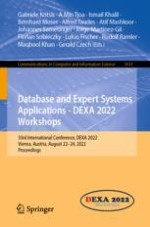This volume constitutes the refereed proceedings of the workshops held at the 33rd International Conference on Database and Expert Systems Applications, DEXA 2022, held in Vienna, Austria, in August 2022: The 6th International Workshop on Cyber-Security and Functional Safety in Cyber-Physical Systems (IWCFS 2022); 4th International Workshop on Machine Learning and Knowledge Graphs (MLKgraphs 2022); 2nd International Workshop on Time Ordered Data (ProTime2022); 2nd International Workshop on AI System Engineering: Math, Modelling and Software (AISys2022); 1st International Workshop on Distributed Ledgers and Related Technologies (DLRT2022); 1st International Workshop on Applied Research, Technology Transfer and Knowledge Exchange in Software and Data Science (ARTE2022).
The 40 papers were thoroughly reviewed and selected from 62 submissions, and discuss a range of topics including: knowledge discovery, biological data, cyber security, cyber-physical system, machine learning, knowledge graphs, information retriever, data base, and artificial intelligence.
